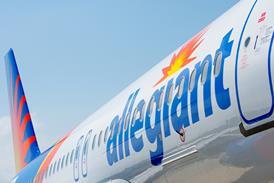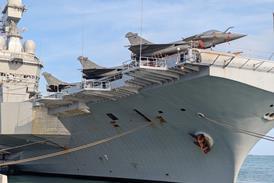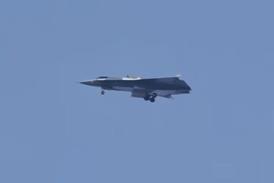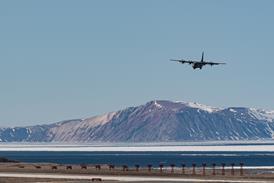When Canadian investment firm Onex paid $900 million a year ago for Boeing’s Wichita/Tulsa commercial aerostructures business, the question was what the newly independent Spirit Aerosystems could do to bring in non-Boeing business. Last week saw one answer, when the company agreed to acquire BAE Systems’ UK aerostructures unit, which gets 80% of its revenue from Airbus.

The key to success in the aerostructures market is to broaden the business base and so drive down costs, both to retain existing work and to win new contracts. Spirit has set itself the goal of becoming a global player in the market, but has had limited success in securing Airbus business, with responses to requests for information late last year suggesting the company’s prices were too high.
Through its agreement to acquire BAE’s aerostructures unit, Spirit will inherit contracts for the Airbus programmes it has been targeting. If the £80 million ($142 million) deal goes through as planned in the first half of this year, the acquisition of sites at Samlesbury and Prestwick in the UK will leave Spirit ideally placed to work with the Toulouse-based manufacturer.
Spirit chief executive Ron Brunton calls the move “an opportunity to diversify our revenue base and accelerate our growth”. BAE’s aerostructures unit generated sales of £207 million in 2005, and earnings of £7.4 million. More than 80% of the unit’s revenue comes from A320 family, A330 and A340 work. The rest is from work on the Boeing 767 and 777 and Raytheon’s Hawker 800XP business jet.
The deal is the latest in a shake-out of the aerostructures industry that has seen primes such as Boeing and BAE sell fabrication facilities to focus on final assembly and system integration. The UK’s GKN bought Boeing’s St Louis, Missouri fabrication plant in 2000, and the Spirit acquisition is one of the first deals to cross the Atlantic the other way.
Although with the current dollar/sterling exchange rate, the UK may look like an expensive environment for aerostructure manufacturing, the move demonstrates Spirit “is clearly trying to become a major aerostructures player on both sides of the Atlantic,” one analyst says.
Analyst Ben Fidler of Deutsche Bank agrees that, for a company with primarily dollar-based contracting, the purchase of a UK-based manufacturing business could leave it open to greater dollar exposure. But he believes Spirit will try to push more work through its two new sites, improving their productivity. And selling on the UK sites, having effectively bought Airbus contracts through the acquisition, remains an option, he adds.
Meanwhile, for BAE, the obvious question being asked is whether the deal marks another milestone on the road away from commercial aerospace and towards the lucrative US defence market. BAE’s decision to divest the aerostructures unit is no surprise to the investor community. “BAE has been trying to dispose of it for a few years – it does not really fit strategically, being a commercial aerospace business, and it’s not terrifically value-added, with little intellectual property,” one analyst says.
While the £80 million sale may cause barely a ripple on the surface of BAE’s £13.5 billion turnover (2004 figure), symbolically the deal takes the company a step further away from the commercial aerospace sector. “There’s no doubt that, long term, its strategy is to focus more on the USA,” says Fidler. He adds that, while the company is not thought to be eyeing further US purchases in the very short term, it is likely to identify more targets over the next 12 months.
BAE declines to comment on whether proceeds from the sale could be used for another acquisition in the USA, or go some way towards plugging its pension fund deficit. Fidler forecasts that BAE will inject £750 million into its pension fund this year, of which £250 million will be cash. Proceeds from the aerostructures sale could contribute to this, he agrees. The company also has a strict cost-cutting strategy in place and, although the divestment is not thought to be a direct response to this, it will help.
BAE says its strategy is to “build on its established positions in the aerospace and defence market in the USA, while maximising the value of its position in the UK and Europe”. Chief executive Mike Turner went further in stressing his company’s commitment to the US market in December, following the publication of the UK government’s Defence Industrial Strategy. Turner conceded that without the new strategy BAE would have found it difficult to remain in the UK.
BAE has recently been increasing its activity in the US market, snapping up armoured vehicle manufacturer United Defence Industries last year. Around a quarter of the company’s revenues now come from the USA, and BAE is expected to report US sales in the region of $4.4 billion when it publishes its full-year results at the end of February.
HELEN MASSY-BERESFORD / LONDON
Source: Flight International























